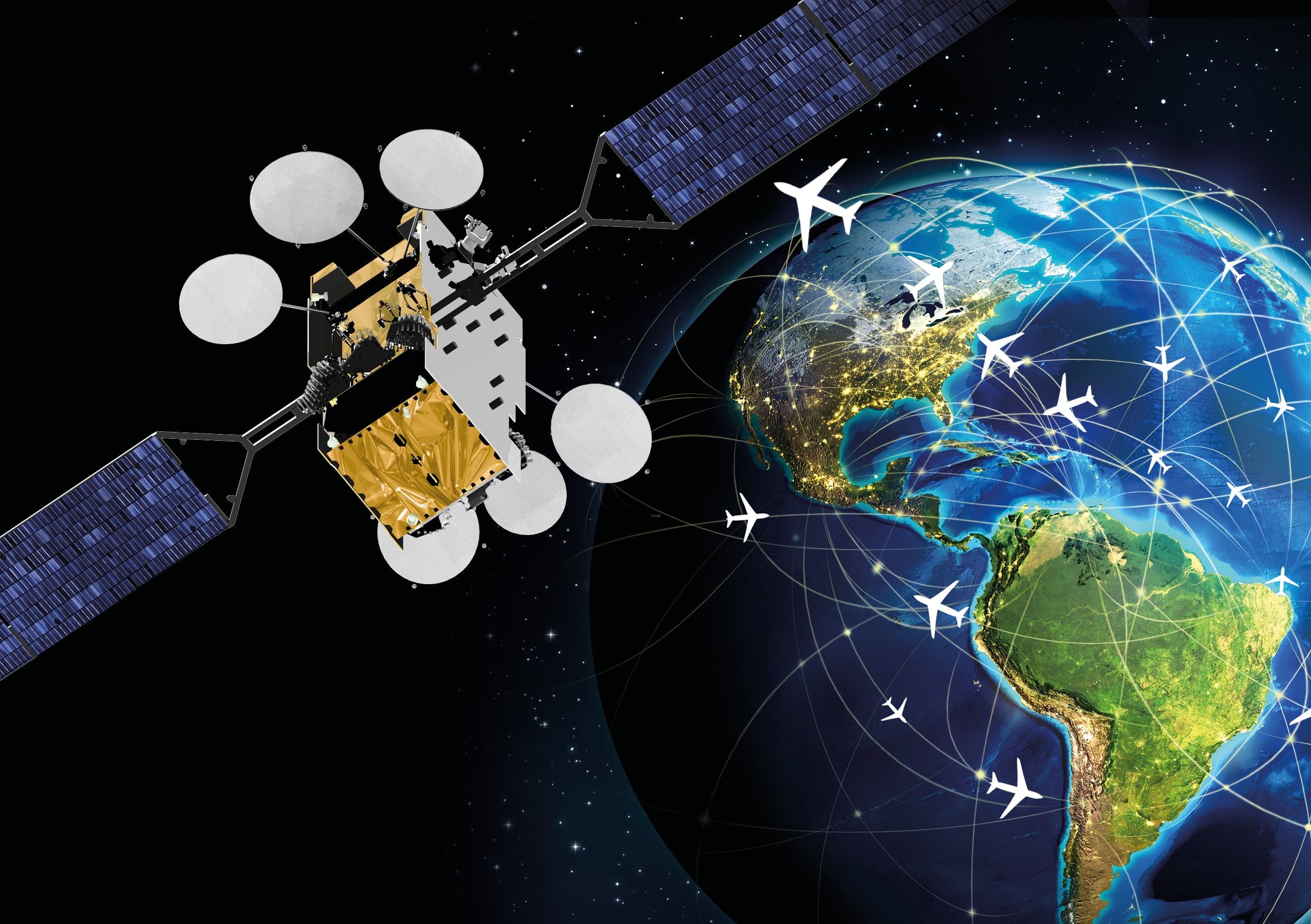Thales and SES Partner to Provide Broadband Over the Americas
Share

APEX Insight: Thales has entered into an agreement with SES to offer airlines in-flight connectivity across the Americas. Thales’ FlytLive will begin operating in mid 2017 using current in-orbit satellites, but SES will procure a new satellite for launch by 2020 to add extra capacity.
In a joint press announcement this morning, Thales Group chairman and CEO, Patrice Caine, and SES President and CEO, Karim Michel Sabbagh, announced a partnership to deliver “the most efficient in-flight connectivity experience over the Americas,” by 2017.
Two currently in-orbit SES satellites will support the initial network over the Americas, which will be enhanced in 2020 with the launch of SES-17, a tailor-made spacecraft to be built by Thales Alenia Space. Optimized for airline customers, the third satellite will be equipped with close to 200 spot beams, varying in size to enable flexible and scalable allocation of capacity.
“What the passengers want is the same service they have at home or at the office.” €” Patrice Caine, Thales
The network will deliver high-throughput Ka-band to Thales’ FlytLive in-flight connectivity solution, which will support the avionics company’s AVANT in-flight entertainment product along with other services. “What the passengers want,” said Caine during the press event Q&A period, “is the same service they have at home or at the office … What we target, what we will deliver in terms of service, is an equivalent service.”
Caine and Sabbagh did not comment on firm connectivity speeds, but they remained bullish on the network’s potential. “What we know factually is that with a connectivity of two megabits per second, per seat, you can pretty much do everything,” said Sabbagh. “If you start from the experience that you want to create and back track and reverse engineer this, then 100 megabits per second seems to be reasonable because you can truly do everything.”
“What we know factually is that with a connectivity of two megabits per second, per seat, you can pretty much do everything.” €” Karim Michel Sabbagh, SES
The planned aviation connectivity network covers an already saturated airspace, currently crowded by competitors Gogo, Chicago-based 2Ku Internet service provider, and ViaSat, whose customers in North America include JetBlue, Virgin America and American Airlines. “The US is fantastic; the market is fantastic. It is the largest regional market in the world, and it’s the one that has the most immediate potential,” Caine said in explaining the strategy behind launching in an area most analysts view as mature when compared to Europe and Asia’s growth potential. Citing figures from IATA, Thales projects air traffic over the US will nearly double by 2030.
In the mix, too, is Thales’ partner Inmarsat, which plans to go live with its $1.2-billion Global Xpress broadband network shortly and has already signed Lufthansa for service via its Europe Aviation Network. When asked how the partnership with SES would affect the standing agreement with the British satellite telecommunications company, Caine assured, “Inmarsat and other Internet service providers are part of our global offer. It is clearly compatible with all of the existing agreements that we have.”
“We have already started some discussions with leading airlines in the States.” €” Patrice Caine, Thales
Thales currently serves 75 airlines worldwide, having equipped more than 1,500 aircraft. The service will be available for new aircraft, as well as for retrofit on existing fleets. “We have already started some discussions with leading airlines in the States particularly,” Caine said.
For more, read “Sky High Connectivity,” a white paper by SES, here.


